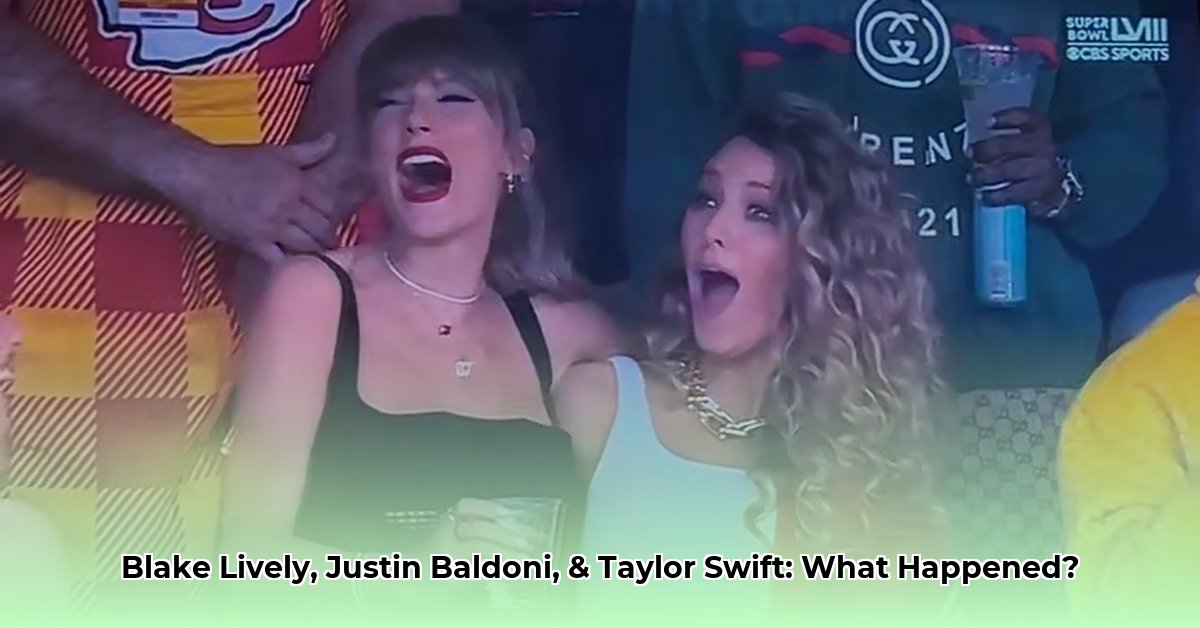A $400 Million Hollywood Showdown
A $400 million lawsuit has ignited a firestorm in Hollywood, pitting director Justin Baldoni against actress Blake Lively and her husband, Ryan Reynolds. At the heart of the dispute lies the film adaptation of “It Ends With Us,” and a contentious text message exchange where Lively refers to Swift and Reynolds as her “dragons.” Baldoni alleges Lively used her connections, particularly her friendship with Taylor Swift, to pressure him into accepting script revisions. This news analysis delves into the complexities of the case, exploring the allegations, the evidence, and the potential ramifications for all involved.
The “It Ends With Us” Impasse: Creative Differences or Coercion?
The lawsuit stems from a disagreement over a pivotal rooftop scene. Baldoni claims a meeting with Lively, Reynolds, and Swift, where Lively presented her rewritten scene, created an intimidating atmosphere. He alleges Swift’s presence, coupled with her endorsement of Lively’s revisions, exerted undue influence. Following the meeting, a text exchange between Baldoni and Lively further fueled the conflict. Baldoni texted Lively praising the revisions but adding he’d have felt the same “without Ryan and Taylor.” Lively’s response, referring to Reynolds and an unnamed individual (presumably Swift) as her “dragons,” became the crux of the lawsuit.
Decoding the “Dragons”: A Harmless Nickname or Veiled Threat?
Baldoni interprets “dragons” as a veiled threat, suggesting Lively’s powerful allies would ensure her version of the scene prevailed. This raises crucial questions: was this a playful moniker, a harmless inside joke, or a calculated move to intimidate? The interpretation of this single word may determine the outcome of the lawsuit. Legal experts suggest that proving intent behind such a message can be challenging, especially in the absence of other corroborating evidence. However, the context of the meeting and the power dynamics at play could influence how a jury perceives this key piece of evidence.
Taylor Swift’s Perceived Role: Silent Bystander or Implicit Force?
Importantly, Taylor Swift is not a defendant in the lawsuit, and there’s no evidence of her direct involvement in any pressure tactics. Her role seems limited to being a figure of influence invoked by Lively. This raises questions about the subtle ways influence can be exerted, even unintentionally. Some analysts believe that merely mentioning Swift’s name may have been a strategic move by Lively, showcasing her powerful connections. Others suggest it was a casual reference with no deeper meaning.
Baldoni’s Allegations: A Director Under Duress?
Baldoni maintains that the “dragons” comment, combined with the high-profile meeting, created an environment where he felt unable to express his creative vision. He alleges Lively intentionally used her relationships with Swift and Reynolds to influence him, leaving him feeling cornered and forced to comply. This highlights the potential for perceived power imbalances in collaborative environments, particularly in Hollywood where connections and influence hold significant weight.
Lively’s Likely Defense: Misunderstanding and Misinterpretation?
While Lively hasn’t publicly commented on the “dragons” comment, her legal team will likely argue it was a harmless figure of speech, taken out of context and misinterpreted by Baldoni. They may portray him as overly sensitive, suggesting he misconstrued a lighthearted remark as a serious threat.
The $400 Million Question: Quantifying Damages and Hollywood Power Dynamics
The substantial sum Baldoni seeks reflects the perceived damage to his reputation and career. This case underscores the high stakes of creative disputes in Hollywood and prompts important questions about power dynamics. To what extent can personal relationships become tools of negotiation, or even coercion? The court’s decision could have significant ramifications for how Hollywood operates.
The Uncertain Future of “It Ends With Us”: Can the Film Recover?
The ongoing legal battle casts a shadow over the film’s future. Production could be delayed, leaving fans wondering if the adaptation will ever see the light of day. The case also raises questions about how future film adaptations will navigate sensitive subject matter and the potential pitfalls of creative collaboration.
Conclusion: A Complex Case with Far-Reaching Implications
This Hollywood drama is far from its final act. The case highlights the complex intersection of celebrity, creative collaboration, and the potential for miscommunication to escalate into significant conflict. As the legal proceedings continue, they may offer valuable insights into the responsible use of power and influence, not just in Hollywood, but in all professional settings. The court’s interpretation of the evidence, particularly the “dragons” text message, will likely shape the outcome and potentially influence future legal interpretations of similar situations. For now, the future of “It Ends With Us,” and the reputations of those involved, remain uncertain.







